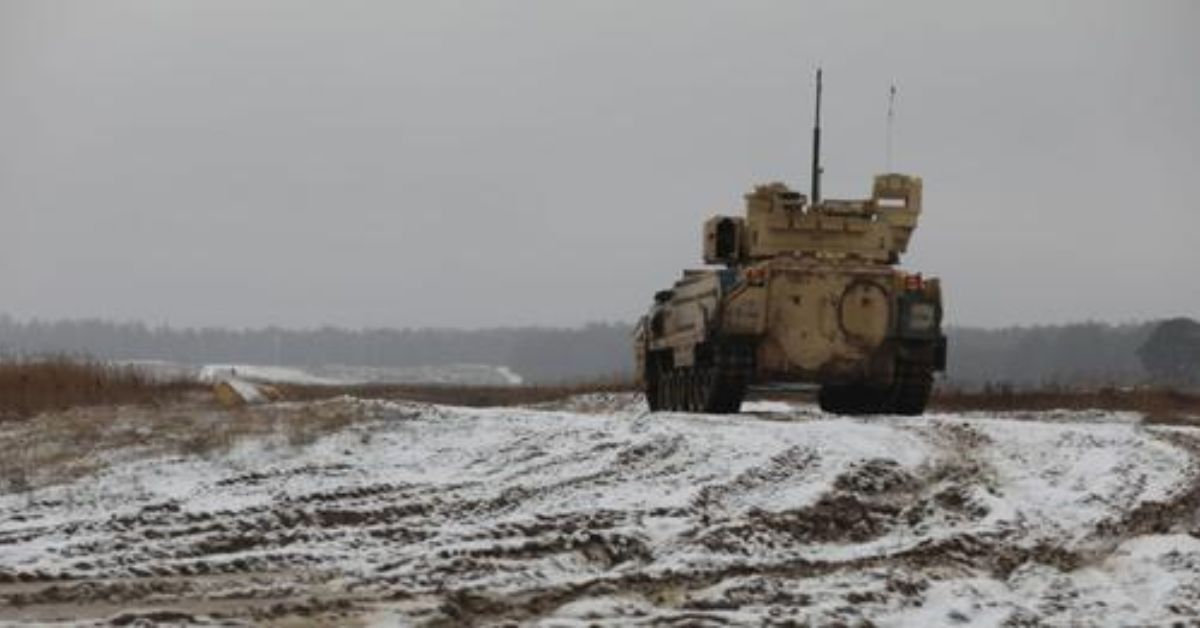The Army released the RFP for the next two phases of the Bradley Fighting Vehicle on July 1, which could see some new entrants from abroad.
WASHINGTON: With the release of a new request for proposal, the US Army has signaled that there may be other companies interested in competing for its future Optionally Manned Fighting Vehicle, outside of the five that participated in the last phase of the contest.
On July 1 the service announced the RFP for the third and fourth phases of the OMFV, which will replace the decades-old Bradley Fighting Vehicle, formally opening up the competitive phases of the contest. The competition will be full and open as Army acquisition leaders said they believe there are other companies, including some abroad, that may want to join the lucrative race.
“There are some combat vehicle original equipment manufacturers, non-US, that are not participating in the competition and have continued to follow the program, so they may choose to throw their hat in the ring,” said Brig. Gen. Glenn Dean, program executive officer for Ground Combat Systems, told reporters during a roundtable today. “We wanted to keep that option open.”
Dean said that some “major primes” that did not participate in phase two of the competition also have developed design concepts that are “very close to what we’ve arrived at with the current design concepts in phase two.” The one-star referenced one firm that was at Eurosatory, the defense trade show in Paris last month, that was “pretty close” to current participants’ concepts. He declined to name the company, which hasn’t yet entered the competition.
Related: Army details ‘highest level,’ but ‘not final’ OMFV requirements for next phases
The OMFV is one of the Army’s top 35 signature modernization priorities, and the current competition is the third time the Army has tried to replace the Bradley. The service is working through a five-phase acquisition timeline and plans to wrap up the second phase, the concept design phase, by December.
The five companies that participated in phase two are Point Blank Enterprises, Oshkosh Defense, BAE Systems Land and Armaments, General Dynamics Land Systems and American Rheinmetall Vehicles. According to Dean, the five vendors have taken different approaches to the Army’s desired characteristics but have come to final designs that are similar in both size and level of protection.
The Army plans to select up to three vendors for phases three and four, which are the detailed design phase, and prototype build and test phase, respectfully. Phase two helped “refine” the requirements in the new RFP, according to Maj. Gen. Ross Coffman, director of the Next Generation Combat Vehicle Cross-Functional Team.
“This request for proposal is born from phase two and what we’ve learned from industry and what industry has iterated with us,” Coffman said.
Proposals are due in early November and the Army plans to choose winners in the third quarter of fiscal 2023. The winners will build up to 11 prototypes, seven mandatory builds and four optional, according to Dean. The companies will also be required to build two ballistic hulls and turrets, armor samples and digital engineering data.
Dean said that OMFV is a best value competition that hinges on three overall criteria. The first is projected performance, which includes mobility, lethality and protection of the vehicle. Second, the offerings’ open architecture approach, which must allow the Army to easily upgrade the vehicle over time. And last, the companies will be evaluated on their “value added to total evaluated cost,” meaning an offering’s total price can be adjusted based on the value demonstrated by performance.
The phase three and four contract is worth $903 million if all options and adjustments are exercised.
The Army still plans for the OMFV to be able to operate autonomously or optionally manned, but is not mature yet in the autonomy domain, Coffman said. He noted that the teleoperating capability, in which a solider operates the vehicle from a remote location, is “very mature.” However, he said the vehicle’s ability to guide itself from one location to the next, or waypoint navigation, still needs further work.
“We are more than capable of doing that, but it really comes down to the obstacle avoidance and the algorithmic solutions of how you move between waypoints and avoid obstacles,” Coffman said.
He added that some companies are further ahead than others, but declined to name them.
Each OMFV is designed to have a two-person crew and carry six soldiers in the back. Under current plans, according to Coffman, there will be six OMFVs per platoon, to carry a minimum of 30 soldiers total, or five each, meaning another seat will be available to transport an additional soldier, such as a medic or interpreter, or other equipment.
The Army plans to select a winner of the overall competition to move forward into low-rate production at the end of fiscal 2027, with first unit equipped scheduled for FY29, according to the service’s press release. The Army will set a final acquisition object midway through phase three and four, Dean said, contingent on how it revises its formations.
“The Army is still kind of working through some reorganization constructs for its Armored Brigade Combat Team,” Dean said.
